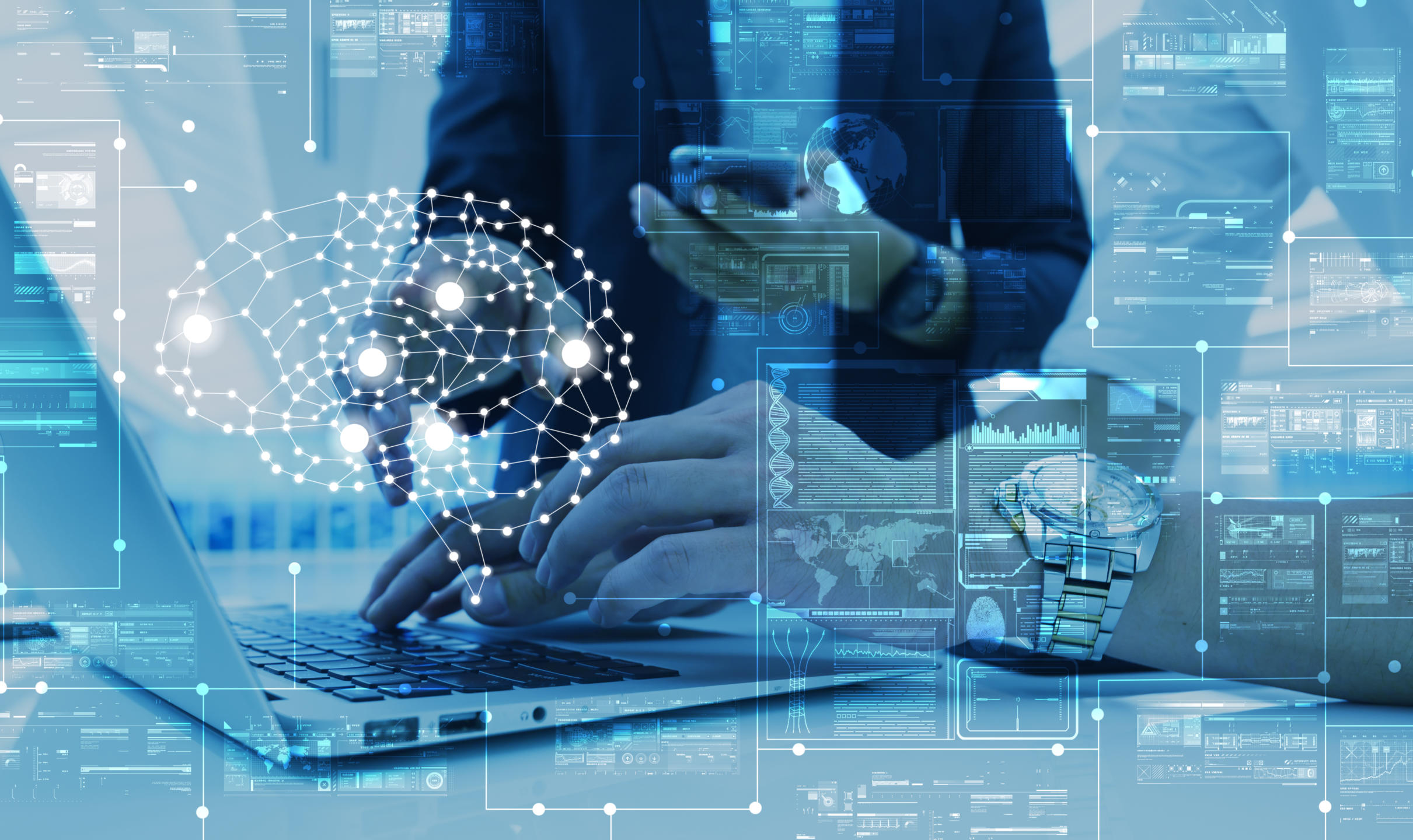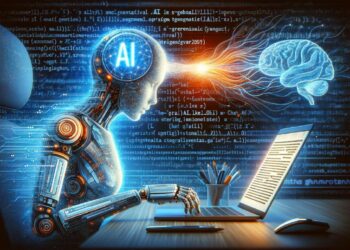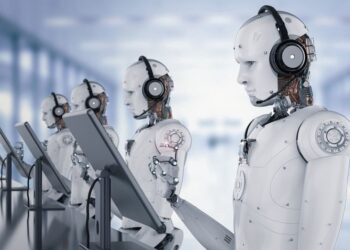The modern workplace is undergoing a seismic shift. For decades, Artificial Intelligence (AI) has been a background tool—a spell-checker, a sophisticated calculator, or a rudimentary chatbot. Today, however, AI has evolved into something fundamentally different: autonomous agents capable of reasoning, planning, executing complex multi-step tasks, and collaborating with human colleagues. These are not merely tools you command; they are your new AI coworkers, digital employees integrated directly into the fabric of your daily operations. This profound transformation marks the beginning of the Agentic Era, redefining productivity, job roles, and the very concept of a “team.”
To thrive in this new landscape, businesses must pivot their strategy from simple automation to strategic augmentation. Understanding how these AI agents function, where their value lies, and the critical human role in managing them is paramount for anyone looking to secure a competitive edge and optimize for the future of work.
Defining the Digital Employee: What is an AI Agent?
Before diving into the workplace implications, it’s crucial to distinguish an AI agent from traditional automation or even a basic generative AI model.
Traditional automation (like a simple bot) follows rigid, pre-programmed rules (e.g., “if X happens, do Y”). A foundational Large Language Model (LLM) (like a common chatbot) can generate text or code based on a single prompt.
An AI Agent, or Digital Employee, is an advanced, autonomous system that combines the intelligence of an LLM with the ability to act upon an environment. They operate on a sophisticated internal cycle:
- Goal Setting (Reasoning): Interpreting a high-level, natural language prompt (e.g., “Prepare a Q3 market analysis report for the APAC region and present a key finding.”).
- Planning (Task Breakdown): Breaking that massive goal into a sequence of smaller, manageable steps (e.g., 1. Search for Q3 APAC market data. 2. Analyze sentiment trends. 3. Draft the report outline. 4. Generate key visual summaries. 5. Consolidate and format the final document.).
- Tool Use (Execution): Interacting with external systems, databases, APIs, and software applications to execute the planned steps. This is the “action” component, where they are no longer just talking but doing (e.g., accessing the company CRM, running a SQL query, drafting a presentation in PowerPoint, sending an email).
- Memory and Reflection (Learning): Reviewing the results of the actions, identifying errors or inconsistencies (a form of self-correction), storing successful strategies in long-term memory (contextual learning), and iterating on the plan until the goal is achieved.
This cyclical, autonomous operation is why AI agents are seen as coworkers rather than just tools—they require only an objective, not step-by-step instructions.
The Value Proposition: Why You Need AI Coworkers
The primary driver behind the explosive adoption of AI agents is their ability to deliver unprecedented efficiency and scale across an organization. They address critical pain points that human-only teams face in the modern, data-rich economy.
A. 24/7 Operational Efficiency and Scale
AI agents operate around the clock, eliminating downtime, working across global time zones, and ensuring continuous workflow execution. They can be deployed rapidly and scaled up or down based on demand without the overhead costs associated with human recruitment, training, and management. This elasticity is transformative for businesses experiencing seasonal spikes or rapid growth.
B. Focusing Human Talent on High-Value Work
Research consistently shows that a large percentage of human work is repetitive, administrative, and process-driven. By offloading tasks such as data entry, calendar management, initial report drafting, and compliance checks, AI agents free up human employees. This allows people to dedicate their time and cognitive energy to tasks that truly require human strengths: creative problem-solving, strategic innovation, building client relationships, and applying emotional intelligence.
C. Enhanced Decision-Making with Real-Time Data
AI agents excel at ingesting and analyzing vast, unstructured datasets—far exceeding human capability in both speed and volume. They can identify complex patterns, correlations, and anomalies that might go unnoticed by human analysts. This capability provides real-time, objective, data-driven insights for strategic planning, financial forecasting, and market response, removing human biases and emotional factors from the initial analysis phase.
D. Personalization at Scale for Customer Experience (CX)
In customer-facing roles, agents enable a degree of personalization previously unattainable. They can instantly process a customer’s entire interaction history across multiple channels (web, chat, phone, social media), understand their current intent, and deliver highly customized solutions. This leads to faster response times, higher customer satisfaction, and improved loyalty.
 AI Agents Across the Enterprise: Role-Specific Augmentation
AI Agents Across the Enterprise: Role-Specific Augmentation
The true power of the Agentic Era is realized when these digital employees are strategically placed across functional departments.
1. AI Agents in Customer Experience (CX)
- Autonomous Resolution: Handling up to 80% of routine inquiries, troubleshooting, and instant FAQs.
- Intelligent Escalation: Seamlessly transferring complex or emotionally charged issues to a human agent, providing the human with a full, synthesized summary of the entire interaction history for maximum context.
- Proactive Service: Monitoring service-level agreements (SLAs) or delivery status in real-time and proactively communicating with customers about potential delays or resolutions before they even inquire.
2. AI Agents in Human Resources (HR)
- Streamlined Onboarding: Automating the entire onboarding checklist, from setting up necessary accounts and completing digital paperwork to providing personalized training modules based on the new hire’s role.
- Policy and Benefits Support: Serving as a 24/7 internal concierge for employees to look up company policies, benefits information, and submit requests (leave, expense reports) without requiring human HR intervention.
- Performance and Coaching: Analyzing performance data to identify skill gaps and offering tailored coaching recommendations and personalized learning paths for employee growth.
3. AI Agents in Software Development and Engineering
- Code Generation and Debugging: Writing initial code drafts, scaffolding new projects, translating code between languages, generating unit tests, and identifying/suggesting fixes for basic bugs.
- Documentation and Compliance: Automatically generating and maintaining up-to-date technical documentation, and running compliance checks against industry standards or company policies.
- Project Management: Monitoring development velocity, flagging potential bottlenecks or resource constraints, and auto-scheduling meetings based on team availability and project deadlines.
4. AI Agents in Marketing and Sales
- Targeted Content Generation: Creating personalized marketing copy, social media posts, and email campaigns tailored to specific customer segments, all while adhering to the brand voice.
- BSEO Optimization: Running comprehensive website audits, suggesting technical SEO fixes, identifying trending keywords, and optimizing existing content for search engine performance.
- Lead Qualification: Nurturing early-stage leads through automated communications, qualifying their interest and budget, and only handing off the highest-potential, “sales-ready” leads to human representatives.
 The New Management Paradigm: Governing the Digital Workforce
The New Management Paradigm: Governing the Digital Workforce
The biggest mistake leaders can make is treating an AI agent like a software application. They are, essentially, digital employees, and their successful deployment requires a new management mindset focused on governance, transparency, and collaboration.
A. The Manager’s Evolved Role
Human managers must transition from managing execution to managing output. This involves:
- Clear Role Definition: Assigning a clear “job description” to each agent, outlining its exact responsibilities and boundaries.
- Setting Performance Metrics (KPIs): Measuring the agent’s effectiveness not just by speed, but by output quality, accuracy, and compliance.
- Feedback and Training Loops: Providing regular, structured feedback (similar to a performance review) to the agent to ensure continuous adaptation and improvement.
B. Combating “Agent Sprawl” and Silos
As AI adoption accelerates, organizations risk having different teams deploy agents independently, leading to duplicated efforts, inconsistent standards, and security vulnerabilities—a problem known as “agent sprawl.”
- Centralized Governance: Establishing a central AI ethics and governance committee to oversee all agent deployments.
- Interoperability: Ensuring all agents are built on a modular architecture that allows them to communicate and collaborate with each other, rather than operating in isolated silos.
- Compliance Tracking: Implementing mandatory logging and auditing systems that track the decision-making process of every agent (the “show your work” function) to maintain trust and legal compliance.
C. The Trust and Transparency Imperative
Trust is the foundation of human-AI collaboration. Employees must understand the agent’s function, its limits, and the safety measures in place.
- Explainability: Agents must be able to “explain their work,” detailing the steps and data sources used to reach a conclusion, allowing human coworkers to quickly validate or debug their output.
- Ethical Guardrails: Implementing strict filters and ethical guidelines to prevent agents from generating biased, non-compliant, or unethical content—a crucial defense against inherited bias from training data.
- Human-in-the-Loop (HITL): Designing workflows where a human must review and approve high-stakes decisions (e.g., major financial transfers, legal document finalization, sensitive customer communication) before the agent is allowed to execute.
The Future of Work: Beyond 2000 Words
Looking ahead, the evolution of AI agents suggests a complete restructuring of the modern organization.
1. The Flattening Organization
As AI automates coordination and support layers (like technical product managers, some middle-management, and quality assurance), traditional hierarchical structures will give way to flatter, cross-functional teams or “pods.” These pods will be powered by a small number of humans focusing on strategy, augmented by numerous, specialized AI agents executing the operational work.
2. The New Talent Pipeline
Entry-level roles focused on routine data processing will diminish. New hires will be expected to contribute at a higher conceptual level from day one. Education and corporate training must pivot rapidly to teach the skills AI cannot replicate: critical thinking, complex contextual judgment, creative innovation, and the ethical oversight of automated systems.
3. The Rise of the Hybrid Role
Job titles will blur. A “Marketing Analyst” might also be a “Prompt Engineer” and an “AI Agent Manager.” Success will depend on the ability to combine hybrid skill sets (e.g., coding and creative direction, finance and data governance) with fluency in commanding and supervising AI agents.
The integration of AI agents as coworkers is not a temporary trend; it is a permanent, structural change to the global economy. Organizations that embrace this reality—by strategically deploying agents, investing in human upskilling, and prioritizing transparent governance—will be the ones that redefine productivity, achieve unprecedented scale, and ultimately, win the future. This is the moment to stop viewing AI as a competitor and start training it as a trusted, if digital, collaborator.










